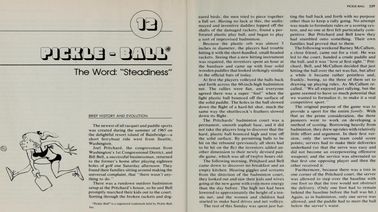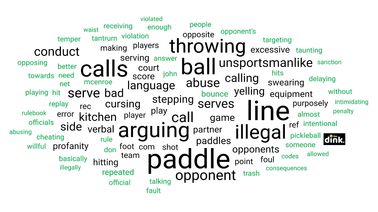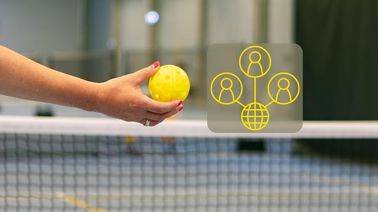
As you delve deeper into the world of pickleball, you may want to know how you stack up against other players. Self-rating can be a helpful way to gauge your skill level and find suitable opponents for enjoyable and competitive matches.
In this article, we will discuss the key steps for accurately rating yourself in pickleball, based on the USA Pickleball Association (USAP) rating system.
Step 1: Understand the USAP Rating System
The USAP uses a numerical system to classify players, ranging from 1.0 to 5.5+.
These ratings measure in increments of 0.5 and represent skill levels for beginners, intermediate players, and advanced competitors.
Familiarize yourself with the descriptions and characteristics of each numerical rating to better understand where you might fit in:
1.0 - New, learning the basics
1.5 - Limited experience, still working on fundamentals
2.0 - Can sustain a short rally with players of equal ability
2.5 - Consistent strokes, understands basic strategy
3.0 - More consistency, better court coverage, beginning to utilize strategy
3.5 - Improved shot variety, better anticipation, refining strategy
4.0 - Consistent and accurate shots, strong court presence, advanced strategy
4.5 - High level of consistency, powerful shots, excellent court positioning
5.0 - Elite player with exceptional skills, strategy, and athleticism
5.5+ - Professional level, often competing in national and international events
Step 2: Take Our Skills Assessment Quiz
To help determine your skill level, we've put together an interactive quiz to help estimate what your level may be. The quiz asks about your knowledge of the game, consistency with shots, and pickleball strategy.
Step 3: Consider Your Game Experience
Your playing experience is an essential factor in determining your self-rating.
Consider the number of games you've played, the types of opponents you've faced, and your success in competitive settings.
A player with a higher win rate against similarly-rated opponents may be ready to move up on the rating scale.
Step 4: Observe and Compare
Watch videos of players at different skill levels to gain insight into where you stand. By observing how they move, strategize, and execute shots, you can better gauge your own abilities.
Look for local pickleball leagues or clubs, as they often host skill-level specific events. Participating in these gatherings can provide an excellent opportunity to compare your abilities with players at various levels.
Buying pickleball equipment? Use code 10DINK for 10% off at Fromuth Picklelaball, the official retailer of Major League Pickleball.
Step 5: Seek Feedback from Others
Ask for feedback from other players, coaches, or instructors. Honest evaluations from knowledgeable sources can provide valuable insight into your strengths and weaknesses.
This feedback will not only help you self-rate more accurately but also help you identify areas for improvement.
Step 6: Reassess and Adjust
Your pickleball skills will likely evolve over time, so it's essential to reassess your self-rating periodically.
Update your self-rating as you progress and grow as a player, ensuring you continue to find suitable opponents for enjoyable and competitive matches.
Conclusion
Self-rating in pickleball is an essential tool for players looking to gauge their skill level and find appropriate opponents.
By understanding the rating system, assessing your skill set, considering your game experience, observing and comparing, seeking feedback, and reassessing regularly, you can accurately determine your rating and continue to grow in the exciting world of pickle
Whether you're just starting on your pickleball journey or working on the last step to becoming a 5.0, The Dink Newsletter is for you:
FAQ
How do I get a pickleball rating?
The official Pickleball ratings are created by USA Pickleball and range from 1.0 - 5.5+. Players must self-rate until they begin to play in tournaments or sanctioned events that are connected with a rating system like DUPR or UTPR. Use our skills assessment test to see what your rating might be.
What is my pickleball rating?
If you haven't played any tournaments then you will need to self-rate by comparing your skills against the USA pickleball's rating system or by using our skills assessment quiz.
How do pickleball ratings work?
Official pickleball ratings are set by USA Pickleball and range from 1.0 - 5.5+. Tournaments and sanctioned events partner with official rating systems like DUPR or UTPR that keep records of every player's rating based on performance.










